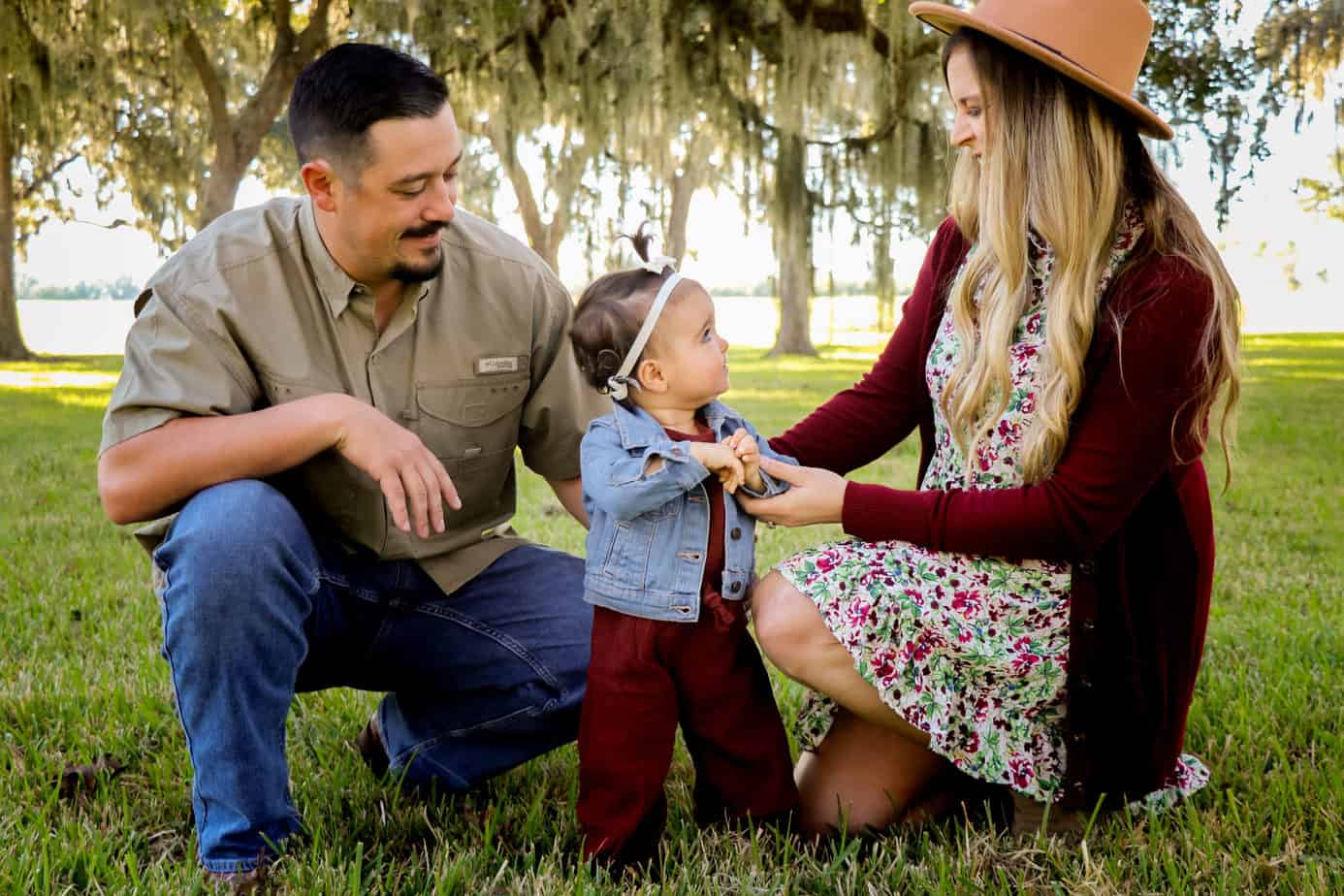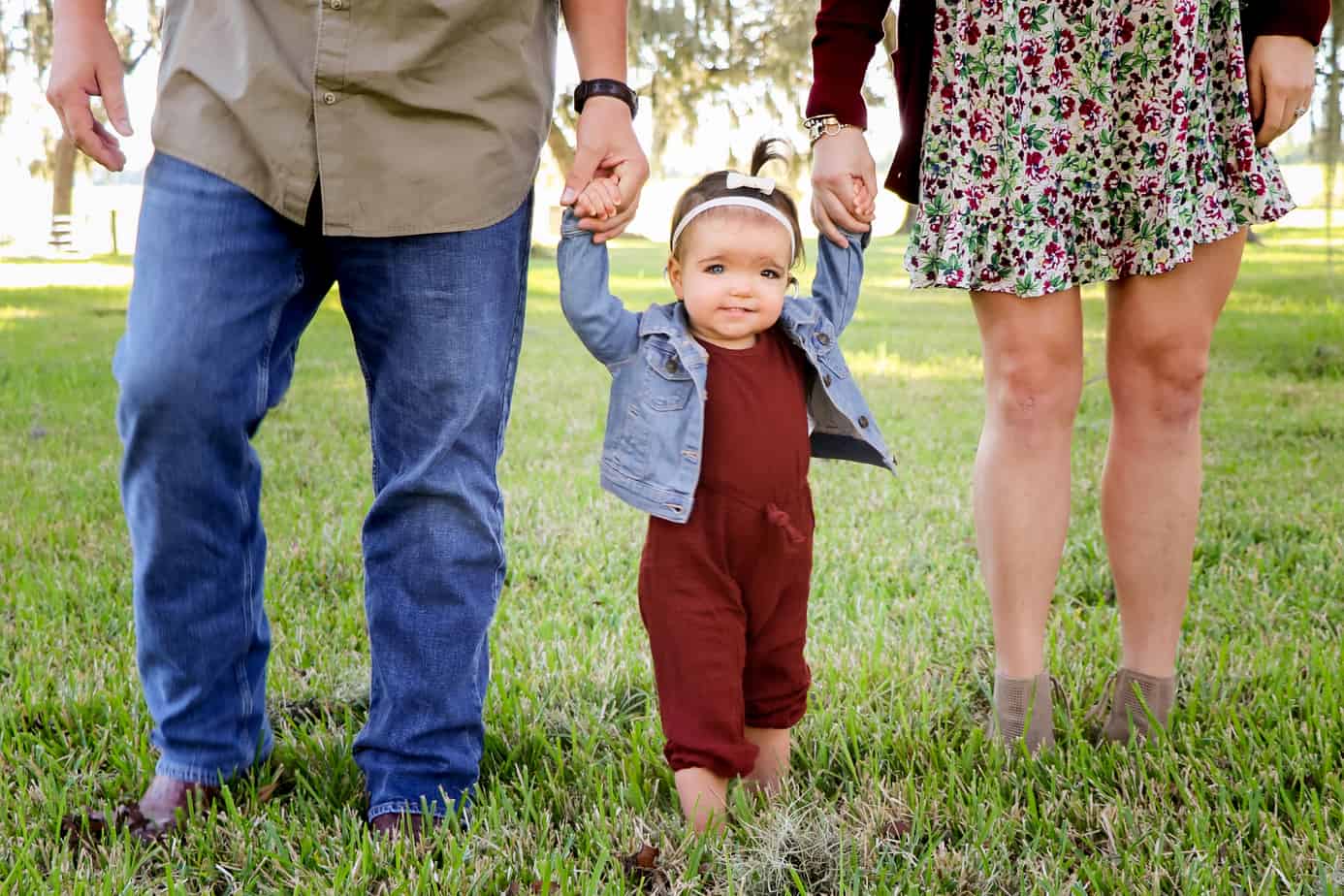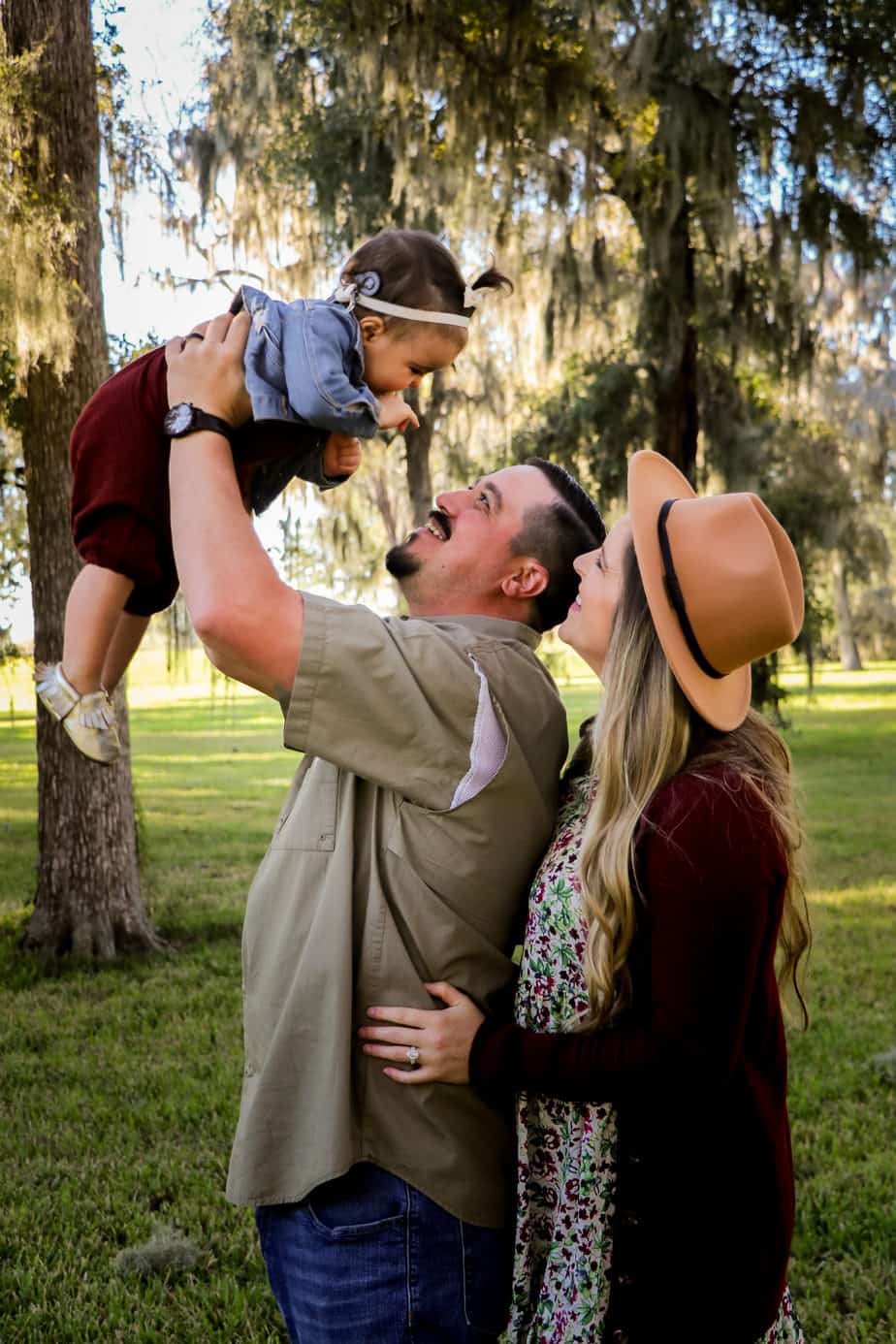After a fairly normal pregnancy and birth, Alyssa and Zane were surprised to find out their newborn daughter had Waardenburg syndrome and hearing loss. From digging into their family history to learning as much as they could about hearing loss, their lives were certainly changed. Wanting to open up the possibilities for their daughter, these parents were confident that cochlear implants would be able to help Lucy thrive:
“In October of 2019, our daughter Lucy was born. During her stay at the hospital, she was admitted to the NICU for low blood sugar levels due to me having gestational diabetes during the pregnancy. According to doctors, this was pretty standard, and she would be in NICU anywhere between two and three days.
On day three, as we were waiting to be discharged, a nurse came up and performed a newborn hearing screening. After performing the test several times, the nurse told us that Lucy did not pass and would need to come back a week later for a follow-up.
One week later, we came back, got the same results and were told to follow up with our pediatrician during her 10-day check-up. During the appointment with our pediatrician, not only did we receive a referral to an audiologist to have her hearing looked at even further, but she had noticed that Lucy’s eyes were set wider than normal and one of her eyes started to turn brown, while the other remained blue. These were symptoms we later learned that were directly related to Waardenburg syndrome (WS). WS was something that I had never heard of, and it also didn’t run in our family. We were told to look into seeing a geneticist and possibly getting answers that may tie all these things together.
Tests and diagnoses
 In the coming weeks, Lucy went through several tests with the audiologist, and the diagnosis was presented to us on New Year’s Eve that our daughter was profoundly deaf. If you had told me what 2020 had in store for us, I would never have believed you. Our crazy journey started literally on the first day of the year. Nothing leading up to that point gave us any indication of why or how she was deaf. She was just simply born that way. Nobody in either my or my husband’s families are deaf, so it truly is a mystery.
In the coming weeks, Lucy went through several tests with the audiologist, and the diagnosis was presented to us on New Year’s Eve that our daughter was profoundly deaf. If you had told me what 2020 had in store for us, I would never have believed you. Our crazy journey started literally on the first day of the year. Nothing leading up to that point gave us any indication of why or how she was deaf. She was just simply born that way. Nobody in either my or my husband’s families are deaf, so it truly is a mystery.
We also had to see a geneticist, and after answering several questions about our lineage, how my pregnancy went, Lucy’s delivery and life up until this point, she was clinically diagnosed with WS.
Researching cochlear implants
We decided to just move on with life and provide Lucy with as many of the same possibilities of hearing that her mommy and daddy had. After doing some research and adjusting to our new normal, we found out that she was a candidate for bilateral cochlear implants (CIs). After joining many online groups, connecting with others on a more personal level and chatting with our audiologist, we decided on Cochlear as our brand for Lucy’s cochlear implants.
Cochlear seemed to be more popular and offered many features that were conducive to Lucy’s lifestyle, not to mention several accessories that would be beneficial to her hearing journey as she grew. She was successfully implanted and activated with the Cochlear™ Nucleus® 7 Sound Processors. Before her activation and up until this point, Lucy has attended auditory verbal therapy once a week at a local hearing institute.
Putting her ‘ears’ on
 Having a child with a hearing implant has been quite the learning experience. I wouldn’t say it was a burden by any means, rather, it’s just more steps that we have to take in our day. Our daughter loves to have her ‘ears’ (as we call them) put on first thing in the morning and hear us tell her, ‘good morning.’ Her eyes light up and she puts on a huge smile each time.
Having a child with a hearing implant has been quite the learning experience. I wouldn’t say it was a burden by any means, rather, it’s just more steps that we have to take in our day. Our daughter loves to have her ‘ears’ (as we call them) put on first thing in the morning and hear us tell her, ‘good morning.’ Her eyes light up and she puts on a huge smile each time.
We haven’t used any accessories yet because she has done so well just with the sound processors themselves, but we look forward to using the Aqua+1 so she will be able to hear while in the pool. We have also used Bluetooth®2 to connect her Nucleus 7 Sound Processors to our phones3 using the True Wireless technology, and although we don’t like her to be completely zoned out of what’s going on around her, we will let her watch her favorite show in the car to keep her occupied when she gets a little bored.
Lucy is capable of anything
 Right now, most of her daily activities and hobbies include playing with her neighbor friends and being around her family. She loves going on walks and listening to all the birds that fly overhead. She really enjoys when we sing to her and being at restaurants (or any public place) so she can wave hello to everybody. It has amazed us to see how much she interacts with anybody and everybody.
Right now, most of her daily activities and hobbies include playing with her neighbor friends and being around her family. She loves going on walks and listening to all the birds that fly overhead. She really enjoys when we sing to her and being at restaurants (or any public place) so she can wave hello to everybody. It has amazed us to see how much she interacts with anybody and everybody.
The world is truly her oyster and she is capable of anything. She has come so far in the short amount of time she’s been in the hearing world, and she continues to do well with her auditory-verbal therapy that she attends once a week. Her auditory verbal therapist says she is beyond where she needs to be and is one of her favorite patients. We feel good about her quality of life and are excited to see what she does in the future!”
If reading Alyssa’s story about Lucy’s journey with Waardenburg syndrome and hearing loss prompts you to find out more about cochlear implant options, click here to learn more.
- The Nucleus 7 Sound Processor with Aqua+ is water resistant to level IP68 of the International Standard IEC60529. This water protection rating means that the sound processor with the Aqua+ can be continuously submerged under water to a depth of 3 m (9 ft and 9 in) for up to 2 hours. This water protection only applies when you use a Cochlear Standard Rechargeable Battery Module or Cochlear Compact Rechargeable Battery Module.
- The Bluetooth® word mark and logos are registered trademarks owned by Bluetooth SIG, Inc. and any use of such marks by Cochlear is under license.
- For information on sound processor and app compatibility, visit www.cochlear.com/compatibility